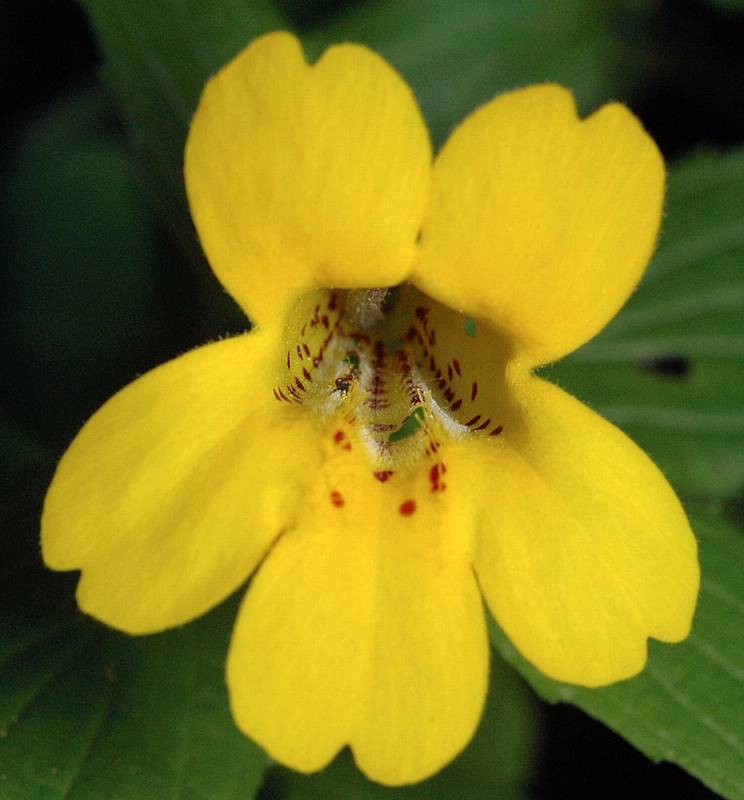Erythranthe dentata
coastal monkey-flower, tooth-leaved monkey-flower
Leaves opposite, serrate, pinnately veined, but the principle lateral veins arising below the middle;
leaf blades lance-elliptic to ovate, acute, the lower short-petiolate, the upper sessile, 2-7 cm. long and 1-3.5 cm. wide.
Flowers few, solitary in the leaf axils, on long pedicels;
calyx 8-16 mm. long, 5-angled with spreading hairs along the ribs, the 5 teeth acute, 2-5 mm. long;
corolla 2.5-4 cm. long, bilabiate, yellow, the long, strongly-flaring throat often red-dotted, the 5 well-developed lobes sometimes washed with reddish-purple;
stamens 4.
Capsule.
Erythranthe dentata
Occurring west of the Cascades crest in Washington; southwestern British Columbia to northern California.
- Local floras:
BC,
CA,
OR,
WA
- Local Web sites:
CalFlora,
CalPhotos,
Flora NW,
PNW Herbaria
WildflowerSearch
iNaturalist (observations)
- LBJ Wildflower Center
- SEINet
- Plants of the World Online
- Encyclopedia of Life
- Wikipedia
- Google Image Search
